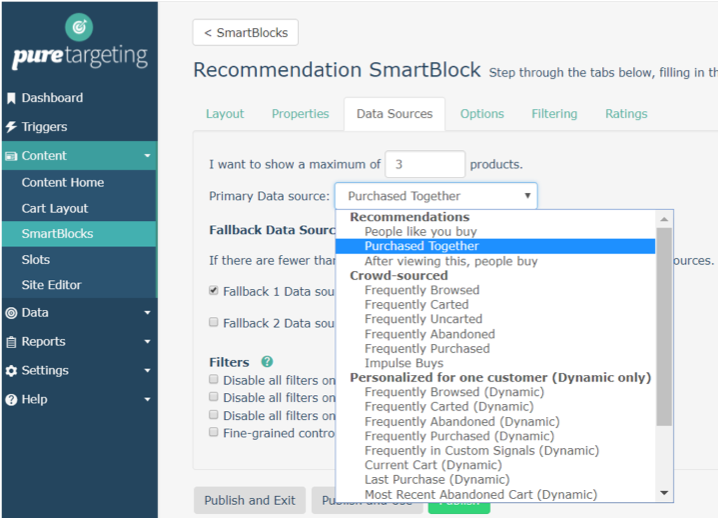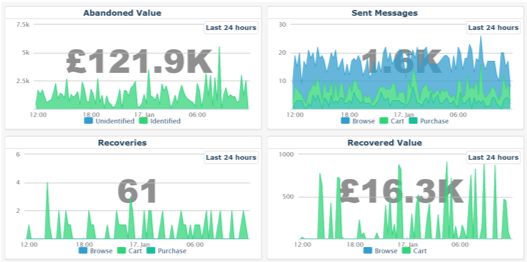Smart marketers know building a personalised customer experience increases conversions. And yet, not every marketer is taking advantage of this.
A study by Econsultancy found that 38 percent of companies are yet to implement website personalisation.
Some see it as a “would like to have” rather than a “must have”. But research tells us this is a misconception. A reported 74 percent of customers feel frustrated when website content is not personalised.
In this blog post, we explain how to get started with website personalisation. Read on for practical advice that you can use to create a personalisation strategy.
Personalisation fundamentals
Before you get started on your website personalisation strategy, it is important to understand the basics.
To personalise content on your website and in your emails, you need to understand four things:
- Signals: These are the actions and behaviours that your audience perform that help you divide them into separate personas. For example, browsing a particular type of product.
- Personas: These are the distinct groups you have identified within your audience that each need content tailored to them in different ways.
- Targets: These are the areas on your website or in your emails that you have decided to personalise.
- Engagement: This is the measure of how your audience responds to your personalisation. Reporting on engagement allows you to refine your personalisation strategy.
Deciding who you are personalising for
The distinct groups of people you are personalising for are called personas. So, how do you identify these?

There are a number of ways to build personas that you can personalise content for:
- Demographics: This is personal information about your customer. For example, their age or location.
- Behaviour: This refers to what a customer does on your site. For example, putting an item in their basket.
- Context: This refers to how a customer found you and through which device. For example, reaching you through organic search on a mobile.
In eCommerce, one of the most useful ways to build personas is through behaviour. Using behaviour to personalise content increases its relevancy.
Relevancy is a factor that helps drive conversions. But it isn’t your only consideration. Framing is also important.
Even the most relevant content can fail to persuade if the language you use doesn’t resonate with your audience. The same is true of imagery.
The way a customer behaves online can help you understand their mind-set. Understanding mind-set can help you choose language and images that will appeal.
Delivering relevant content, framed to resonate, helps you influence what your customer does next. In this way, you can drive greater numbers to convert and increase your revenue.
Deciding what to personalise
Once you’ve decided the personas you want to personalise for, you need to pick which content to personalise.
Some things to consider when deciding what to personalise:
- Location: Which elements of your site do you want to personalise? For example, you might want to personalise headlines, images, or calls-to-action.
- Page layout: Does the design of your site easily allow you to isolate areas to personalise? Working with a wireframe of your site can help you work this out.
- Purpose: Before you decide to personalise an element work out how this benefits your customer and your bottom line. Personalisation should improve customer experience and increase conversions. Don’t personalise for the sake of it.

Putting personalisation into practice
Once you’ve decided the personas you want to personalise for, and what you want to personalise for them, it’s time to implement.
This part is surprisingly simple. Personalisation technology like PureTargeting allows you to insert smart blocks into your email and website templates.
Once personas have been defined, these smart blocks automatically tailor the content shown to them. Over time, machine learning adapts these smart blocks to deliver the most relevant content.
One way to personalise is through product recommendations. You can use smart blocks to insert product recommendations into emails and your website.
Product recommendations can be based on a range of data sources. For example, you might choose to show people what others like them have bought. Or you could show people items that are commonly purchased together.
Another way to personalise is by recommending the most appropriate content. For example, you could tailor which piece of guide content you recommend to each persona. This makes your content more relevant and increases engagement.
Whatever you choose to personalise, adding a smart block makes this achievable, automatically.

Measure, learn, refine
Once you have a personalisation strategy in place, you’ll want to report on it.
Personalisation technology like PureTargeting has built in reporting capabilities. This allows you to easily determine the ROI of your activity.
Reporting on the success of your personalisation efforts helps you to refine your strategy. It highlights areas of friction that may be limiting your conversions and shows you where to focus your efforts.
In addition, reporting helps you to spot trends in your data. Being aware of trends allows you to do more of what works and maximise your success.
Reporting also helps you demonstrate the value of personalisation to your business. This is crucial if you want to secure ongoing investment in the tools that support your strategy.

Best practice tips
If you’re planning to implement website personalisation, here are some best practices to keep in mind:
- Avoid limiting choice: Make sure your audience can still easily access your whole range of products. If you personalise every element of their experience you may limit them to similar products.
- Always test and learn: Don’t forget that not every type of personalisation you try will work. Always have a hypothesis for what you think will happen. Report against this and then make refinements.
- Personalise with a purpose: Make sure there is a good reason to personalise. Only personalise if you have reason to think it will improve customer experience and increase your bottom line.
When does personalisation get creepy?
A concern some marketers voice about personalistion is that it might make their brand seem creepy.
Some worry the line between improving customer experience and making customer’s feel like they are being watched, is becoming blurred.

This is where testing and learning comes to the fore.
Behaviour-based personalisation is likely to improve customer experience and increase conversions. But this may not be true for every persona within your audience.
Test, learn, and understand how each persona responds to personalisation. This allows you to create the most profitable personalisation strategy and optimise customer experience.
Takeaway
Email and website personalisation is not super technical. It is within your reach. Outlining a personalisation strategy is simple if you follow the stages we’ve discussed.
Once you have a strategy in place, you just need the technology to implement it. Book a demo to see our personalisation technology in action.
To learn more about personalisation, download our detailed guide below.

